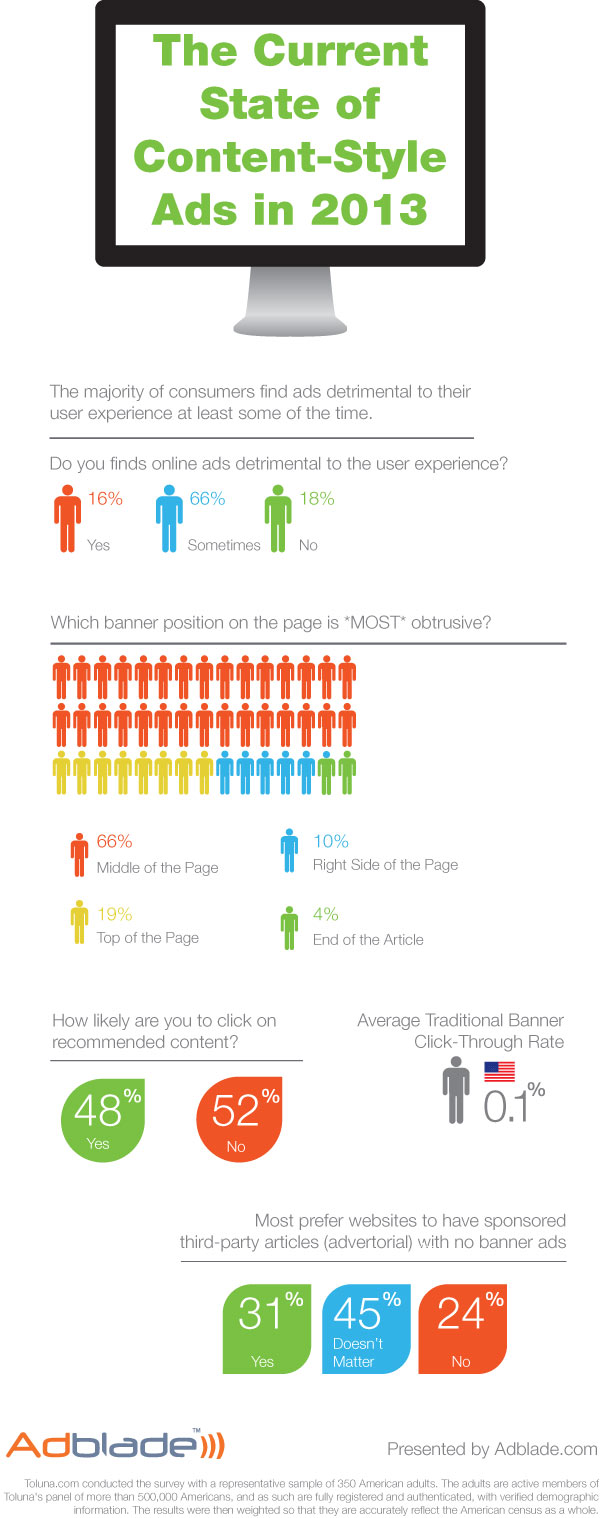Online advertising can greatly affect consumers’ experiences on webpages, with some formats capable of driving consumers away from a page, according to a recent survey Adblade commissioned from Toluna. The danger for advertisers and publishers is that flash-heavy page takeover ads – the ones that advertisers believe engage consumers and provide publishers with more revenue – are the worst culprits for delivering negative experiences.
Nearly 82 percent of the 350 American adults surveyed said they felt online ads are detrimental to their experience “always” or “some of the time.” When asked which types of ad units were most likely to drive them away from a webpage, 55% said flash takeover ads. Traditional banners placed on the right hand side (10%) and pre-roll video ads (9%) were the next most likely, while ads within a slideshow (2%), text links (2%) and bottom of article placements (5%) were the least likely.
When it comes to traditional display ads, consumers have clear preferences on where on the page ads should go so as not to intrude on their content-consuming experience. Nearly two-thirds of the respondents felt that ads placed in the middle of a page were the most obtrusive. More than 90% of consumers said that they notice banner ads on the right rail at least sometimes, but only 10% found these ads the most obtrusive. Roughly half felt that end-of-article placements were the least obtrusive, giving publishers a guideline for where they can place ads without hurting their audience’s experience.
“The survey shows that consumers are very aware of ads on the sites they visit, but they have clearly-defined limits for what does and doesn’t have a negative impact on their experience,” said Ash Nashed, CEO and co-founder of Adblade. “Advertisers today are looking for new ways to reach and engage with consumers online while publishers are simultaneously looking to increase their ad revenue. Both parties need to keep the audience’s best interests in mind while pursuing these goals.”

